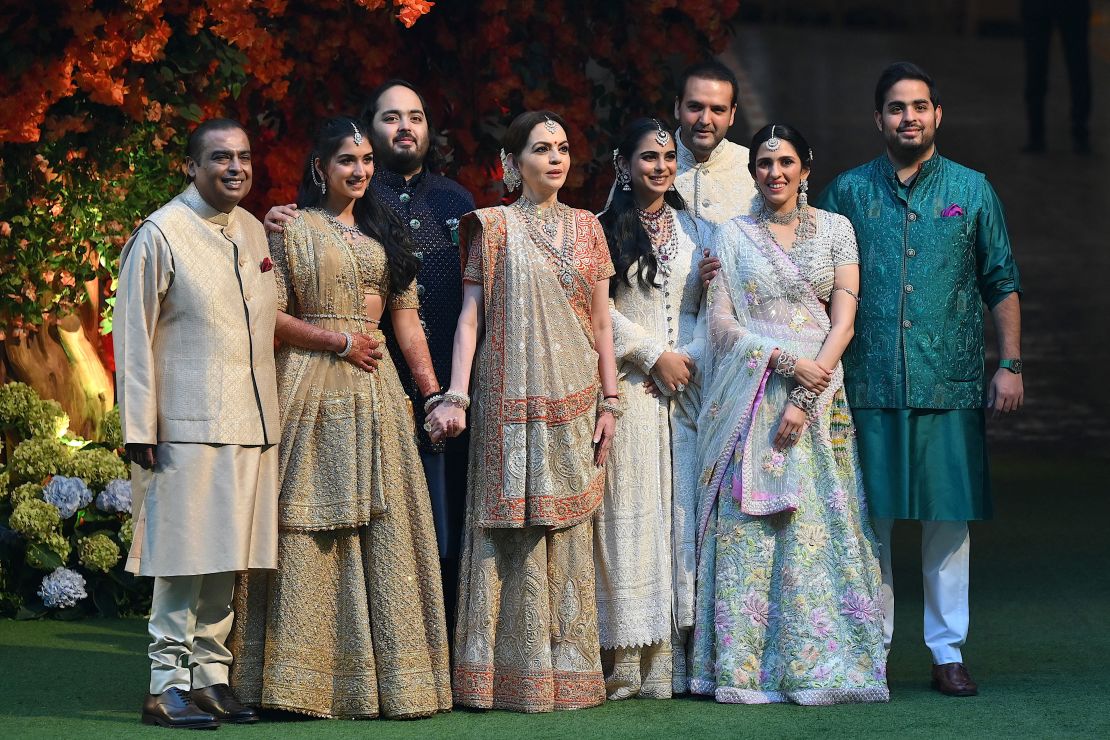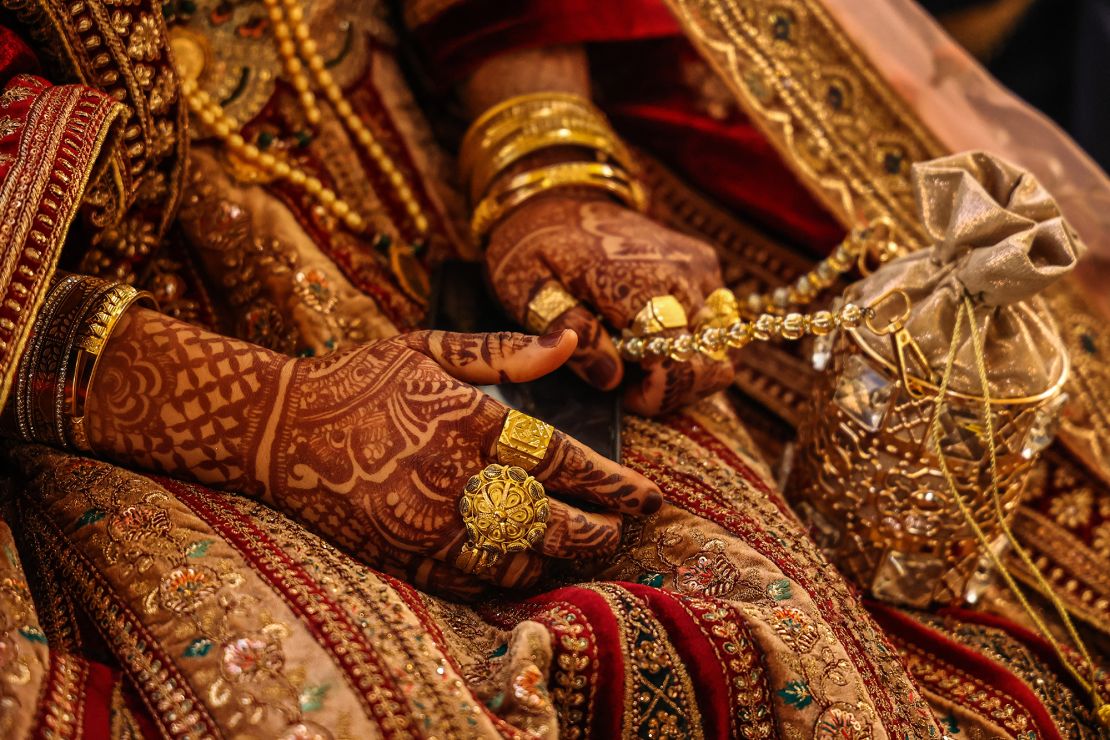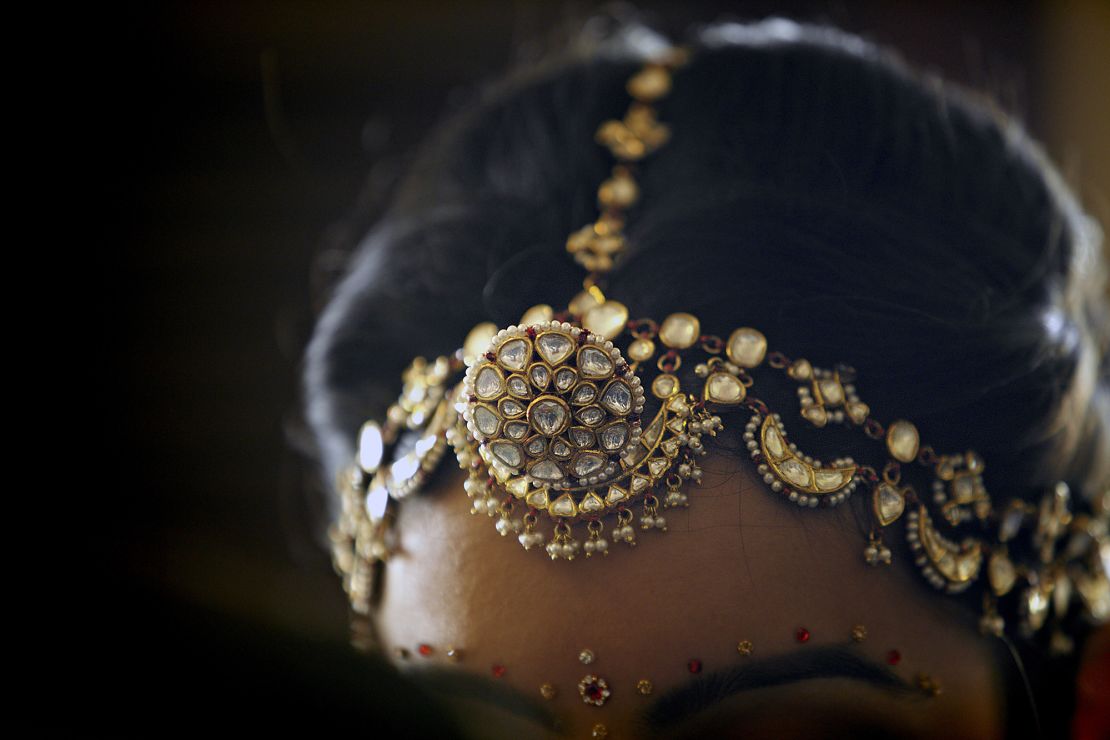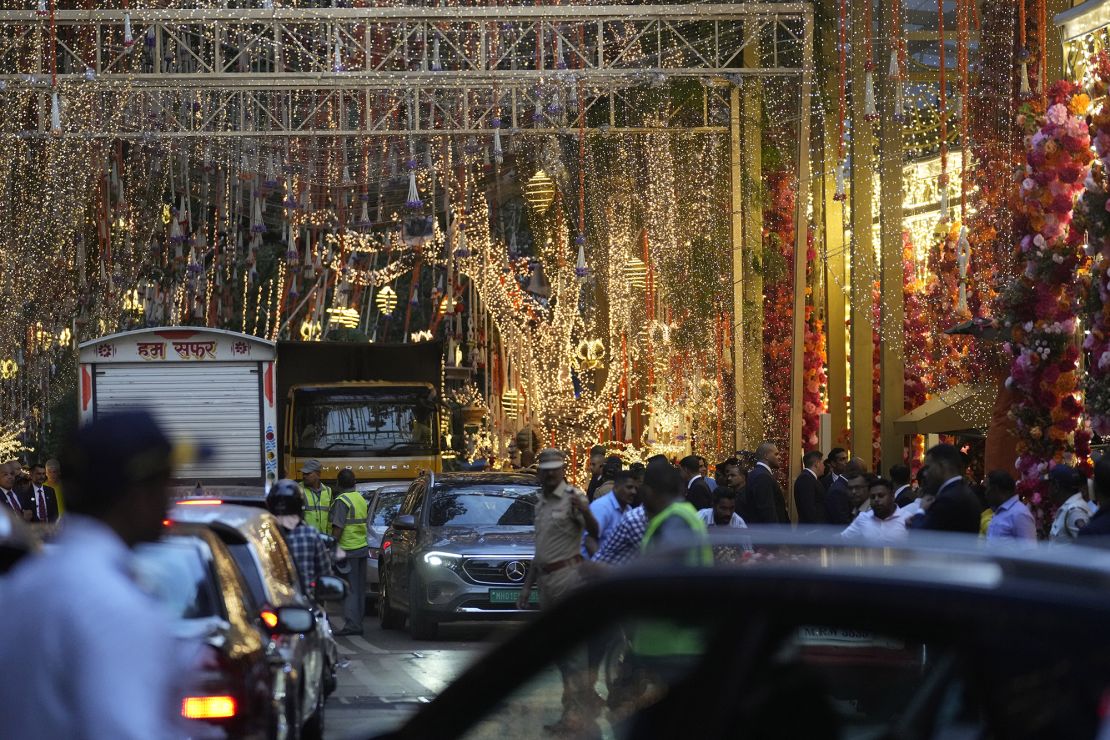The wedding of the year is here.
In less than a week, Anant Ambani, son of Indian billionaire Mukesh Ambani, will marry his girlfriend Radhika Merchant. India is no stranger to opulent weddings, but the preparations and parties for this particular union have transfixed the country.
Jaw-dropping guest lists, which have included Silicon Valley billionaires and Bollywood stars, have underscored Mukesh Ambani’s growing influence in the global economy. Asia’s richest family has also shown off its wealth with a display of jewels evoking the long-gone era of maharajahs and Mughal emperors.
And, last week, Justin Bieber became the latest international pop star to entertain at yet another pre-wedding function by the Ambanis in Mumbai. The singer performed at the the sangeet ceremony, a night when the bride and groom’s wedding party dances for guests. It also saw the entire Ambani clan, including Mukesh, on stage dancing to Bollywood’s hit song, Deewangi Deewangi.
The Ambanis have set a new benchmark for big, fat Indian weddings, which are bound to grow bigger and louder than ever before as the number of the ultra-rich swells in the world’s fastest-growing major economy.
“The Ambani wedding parties have … had a multi-faceted impact on the wedding industry in India, influencing trends, boosting demand for wedding vendors, promoting cultural heritage and even driving economic growth,” Tim Chi, CEO of The Knot Worldwide, a wedding planning service, told CNN.

The Indian wedding industry has boomed since the country emerged from the pandemic. Estimated at about $130 billion, it’s now nearly twice the size of America’s, although still smaller than that of China’s, according to a report by Jefferies last month. The industry plays a major role in boosting sectors such as fashion and travel.
“An otherwise value-conscious society, Indians love to spend on weddings,” Jefferies said. “And this is irrespective of the economic classes.”
At about $15,000, the average Indian wedding costs more than three times the average annual household income.
More than a status symbol
Weddings can be expensive affairs in any country, but in India they are especially important as symbols of power and status.
Parents in South Asia typically spend a significant portion of their lifetime savings on their children’s weddings, but the scale of many of these events has now become gargantuan, coinciding with India’s rise as an economic powerhouse.

“In the last decade there has been a big shift in Indian weddings across the board,” said Sima Taparia, a marriage consultant who became a household name in the country after starring in the hit Netflix docuseries “Indian Matchmaking.” It is now common for wealthy Indians to host big weddings at exotic destinations abroad and invite Bollywood actors or famous musicians to perform, she added.
“The Indian wedding is about the power of contacts, the power of relationships and the power of wealth,” said Aditya Motwane, an events planner who founded Motwane Entertainment & Weddings and worked on the wedding of actress Priyanka Chopra and singer Nick Jonas in 2018.
“You show everyone you know that you’ve arrived in life through these kinds of celebrations,” he added.
Indian weddings are often spread across several days, with an average guest list of 326, compared with 115 in the United States, according to The Knot Worldwide.
The scale is exponentially bigger when it comes to the affluent, whose weddings involve thousands of guests, foreign locations and expensive gifts. Ambani’s three-day pre-wedding party in the western Indian city of Jamnagar in March was attended by around 1,200 high-profile guests, including Mark Zuckerberg and Bill Gates.
It is not uncommon for the very wealthy to spend many millions on the festivities. At the Ambani party, an elaborate light show featuring 5,500 drones lit up the sky above a glass palace custom-built for the festivities, where guests danced to a performance by none other than Rihanna.
The outrageously rich also come up with some unusual requests. One couple asked Motwane to arrange for an elephant — a sacred animal to Hindus — to be in Monte Carlo to bless them.
With India set to become the world’s third-largest economy by 2027, extravagant weddings are expected to become even more frequent.

According to a report from real estate consultancy Knight Frank, the number of Indians with a net worth of at least $30 million will rise by 50% over the five years to 2028, the biggest increase of any country. And, lower down the economic ladder, by 2030 some 600 million Indians are projected to be middle-class, a segment that will represent over 80% of the country’s spending power.
“As the middle class grows, so does their disposable income, which inevitably is spent on lavish parties and celebrations,” said Tina Tharwani, co-founder of wedding planning company Shaadi Squad.
Rihanna, couture and emeralds
The average luxury Indian wedding can cost anywhere between $200,000 and $400,000, according to Jefferies.
This kind of budget allows for accommodation at five-star hotels across the world, sumptuous catering, decor and entertainment, and sometimes includes Bollywood actors or international singers.
But the Jefferies cost estimate does not include expenses on jewelry or attire. Bridal spending accounts for over half of the total jewelry market it India, the bank noted.
The country is one of the largest markets for gold, but its appetite for diamonds and other precious gems is also growing. The emerald necklace worn by Nita Ambani, the groom’s mother, at the festivities in March stunned the internet with its size and sparkle.
No luxury Indian wedding is complete without lavish meals, which at times involves flying in Michelin star chefs and the finest of ingredients from across the world.

An extra layer of expense is often added to the budget because many Indians don’t eat meat, and some avoid root vegetables as well. Motwane recalls planning a wedding in Florence where many guests did not eat garlic or onion. The Italian cooks “hit the roof,” he said. A renowned Indian Italian chef and her team were then flown in.
A range of other businesses are poised for growth as Ambani-style high-profile weddings lead to a “trickle-down effect,” setting “new trends and standards (and) influencing couples’ expectations,” said Tharwani, who worked on Indian cricketer Virat Kohli’s wedding in Tuscany.
Vanessa Almeida, who looked after packaging and delivery of some 8,000 gifts for Ambani’s guests at the jamboree in March, told CNN that similar party favors are becoming sought-after across the country.
Of the many expensive presents that the family showered upon its A-list guests — from silver candle sticks and shawls to terrariums and bird houses — customized leather products are among those that have caught on, said Almeida, owner of The Gift House in Goa.
Demand for wedding videographers has also boomed in the last decade, with companies charging as much as $10,000 for a film. Many couples also shoot pre-wedding videos, which are painstakingly choreographed and inspired by Bollywood musicals.
“Brides and grooms go for pre-wedding shoots across the globe,” said Taparia.
Local economy
The rise in opulent celebrations held abroad has led to some consternation among the local communities, wedding planners say.
In late May, the Ambanis held a four-day Mediterranean cruise for friends and family, with a bevy of Bollywood stars and performances by Katy Perry, the Backstreet Boys and Italian tenor Andrea Bocelli.
Not everyone was impressed. The partygoers drew the ire of residents in the port city of Genoa, according to media reports, as they kept several neighborhoods awake with loud music until dawn.
But, despite the occasional inconvenience, such functions also generate revenue and employment in the area. “You’re looking at a minimum of 2-3 million euros coming in over three days,” said Motwane.

The Indian government is now trying to get a bigger chunk of the luxury wedding revenue, with Prime Minister Narendra Modi launching a “Wed in India” campaign to encourage affluent families to get married in the country.
“People often spend significant amounts of money to get married abroad,” Modi said in March. But by hosting weddings in India, “families can enjoy lavish celebrations for three to four days, providing livelihood opportunities for locals.”








